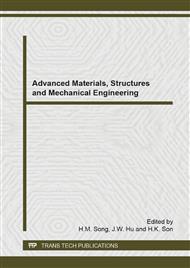p.451
p.455
p.461
p.466
p.470
p.476
p.482
p.487
p.494
Sterilization of Oil Palm Fruits by Microwave Heating for Replacing Steam Treatment in Palm Oil Mill Process
Abstract:
This research studies on the effects of microwave heating of oil palm fruits for the sterilization. The conventional uses steam heating for sterilization of oil palm fruit brunches. The sterilization is requires as a pretreatment to deactivate enzymes that increase the free fatty acid content (FFA) before oil extraction. The conventional treatment of sterilization produces the large amount of waste water from the palm oil mill process. So, microwave heating is used in this research for solving this problem and improving of crude palm oil quality. In experiment, the oil palm fruits were heated for 1-5 min after that oil was extracted by solvent extraction. Oil content (OC), Moisture content (MC), Deterioration Of Bleachability Index (DOBI), carotene content (CC) and FFA were investigated. The optimum condition was 850W for 2 min of heating time. The chemical properties were 84.14% of OC, 8.49% of MC in mesocarp, 2.36 of DOBI, 882.55 ppm of CC and 3.40% of FFA. Fronm the results of chemical properties indicated that microwave heating is good technique for sterilization of palm oil fruits when compared with steam treatment.
Info:
Periodical:
Pages:
470-475
Citation:
Online since:
September 2014
Authors:
Keywords:
Price:
Сopyright:
© 2014 Trans Tech Publications Ltd. All Rights Reserved
Share:
Citation:


